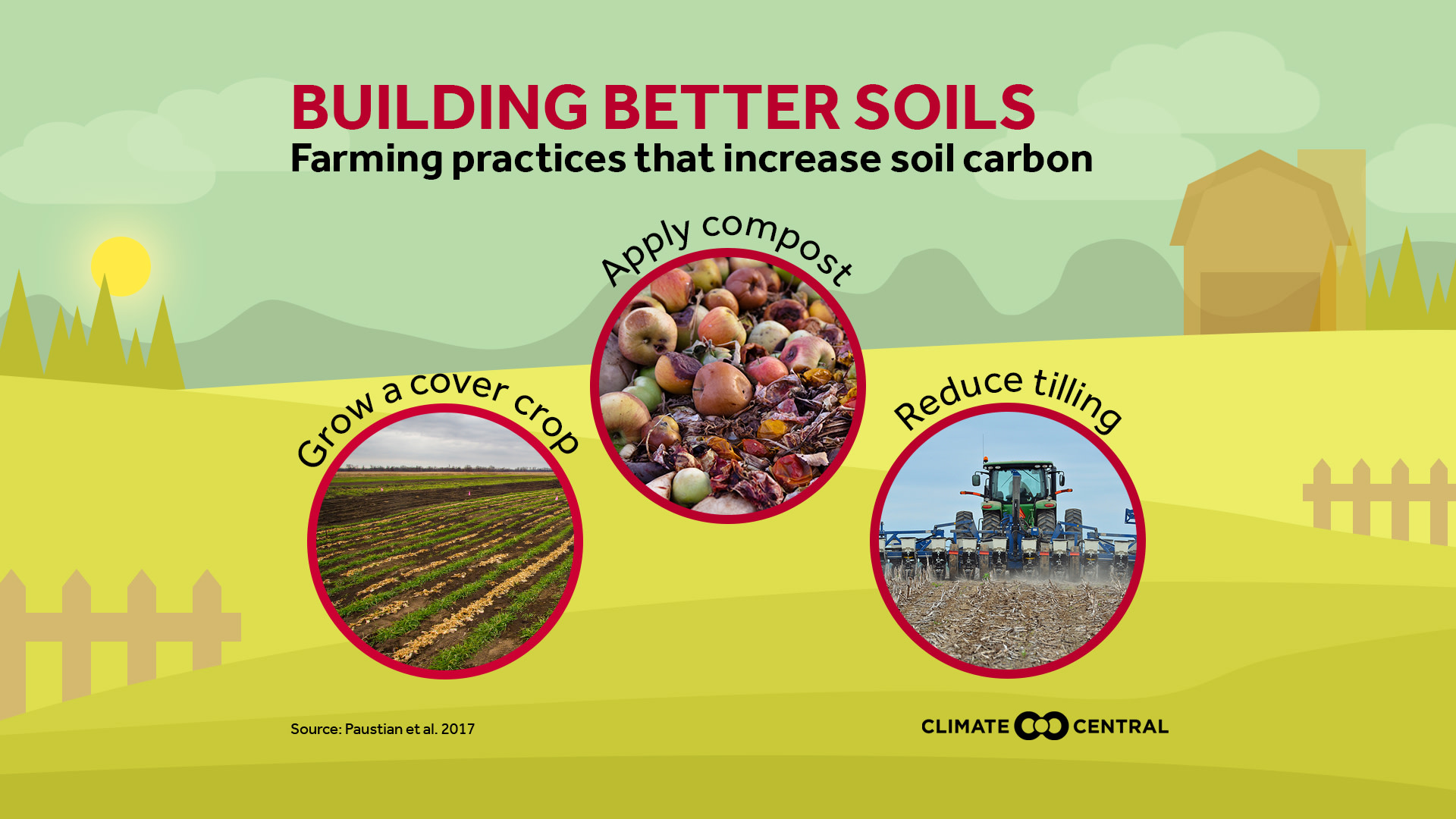Farming has historically been a large part of the American experience, and it continues today, from the family farms to the backyard gardens. But as the climate continues to warm from the increase in atmospheric greenhouse gases, old challenges to farming will be magnified. Droughts will become more intense, stunting growth of crops, or requiring irrigation, which further strains water resources. Hotter days can directly damage high value crops like corn and soybeans and increase the periods where invasive weeds and insects can damage yields. More frequent heavy rain can wash away topsoil, which contains valuable nutrients that feed the crops and fertilizers, worsening water quality in nearby streams and rivers
Methods that make for healthier and more productive soil — which nourishes a better harvest — also have the benefit of reducing carbon dioxide (CO2) from the atmosphere and keeping the CO2 in the soil as carbon. No-till farming is less disturbing to the soil, which reduces erosion during heavy rainfall. No-till keeps carbon in subsurface soil from being exposed to the atmosphere, preventing its conversion to CO2. Planting a cover crop after harvest, like grasses or other herbaceous plants, reduces erosion and accumulates carbon in the soil. More efficient fertilizing practices, such as using nitrogen stabilizers or shifting the time of applications, reduces the emission of nitrogen oxide, which is also a greenhouse gas. And the use of more organic fertilizers, rather than synthetic, increases carbon in the soil.
In addition to keeping additional greenhouse gases out of the atmosphere and potentially slowing the rate of planetary warming, these practices work together to create healthier, more productive soils. Higher yields can result, which produce a better economic result for the family farms and a more productive residential backyard garden.
Methodology: Agricultural practices and associated carbon storage potentials are described by Paustian et al. (2017). The state totals shown in the graphics have been aggregated from county-level estimates. Carbon storage estimates for individual farms using different land management practices can be calculated from the COMET-Farm tool developed at Colorado State University in collaboration with the USDA’s Natural Resources Conservation Service. Comparisons of the number of cars per year and the number of homes’ electricity use per year to the amount of CO2 sequestered were calculated according to the EPA’s method, available at EPA Greenhouse Gas Equivalencies Calculator.
